ISRO’s Top 5 Upcoming Innovative Programmes
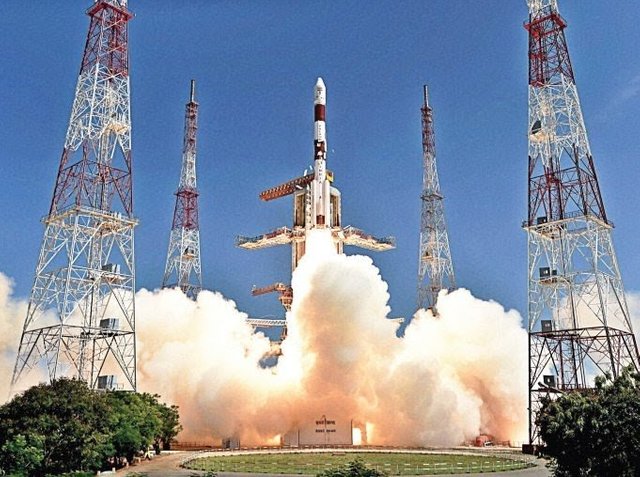
ISRO has a splendid history of achievements that has propelled India into the Space Age, in addition to pushing its competitors across the world to aim higher and further. On February 15, the Indian Space Research Organisation (ISRO) added another feather in the cap. By successfully launching the PSLV-C37, ISRO has pushed a whopping 104 satellites into orbit, a new world record. The previous word record was held by the Russian Space Agency, for launching 37 satellites. In celebration of these achievements, here is ISRO’s next 5 top innovative missions that the Indian space agency has up its sleeve.
Bigger Rockets (2017)
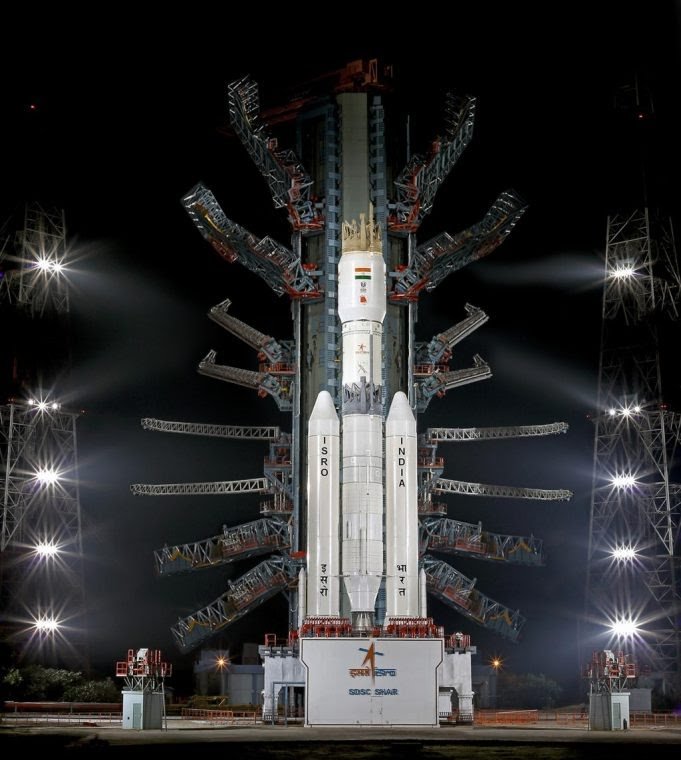
If India has to play a pivotal role in global satellite industry, it will need bigger and heavier rockets to launch heavier payloads into space. The Geosynchronous Satellite Launch Vehicle Mark III, also referred to as the Launch Vehicle Mark 3, LVM3 or GSLV-III is a launch vehicle developed by ISRO. It has a capacity to lift up to 4 tonnes into GTO (Geosynchronous Transfer Orbit – where all the communication satellites have to reach to reach the 36,000 km circular orbit). GSAT-19 is planned as the payload for the first developmental flight of the indigenous GSLV-Mk III-D1 Launcher. As of now the launch is planned in April 2017. Mk III can loft satellites weighing 4,000 kg to space, double the weight the current GSLV-Mk II can lift. The next step after Mk III though will be able to lift 6.5 tonnes. It is what ISRO will require if it is to send Indians to the moon as has been reported. The Mk3 will form the basis for the launch vehicle which will use four instead of two S200 solid rocket boosters, currently the second most powerful solid rockets in the world.
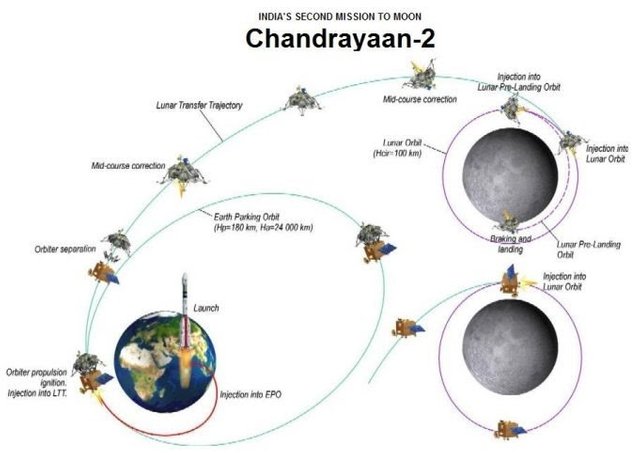
Chandrayaan 2 (2018)
India’s second mission to the Moon is an advanced version of the previous Chandrayaan-1 mission. It consists of an Orbiter, Lander and Rover configuration. It is planned to be launched as a composite stack into the Earth Parking Orbit (EPO) of 170 X 18,500 km by GSLV-Mk II. The Orbiter carries the combined stack up to moon till the Lunar Orbit Insertion (LOI). The combined stack is then inserted into a lunar orbit of 100 km x 100 km. The Lander is separated from the Orbiter in this orbit. The Orbiter with scientific payloads will orbit around the moon. The Lander will soft land on the Moon at a specified site and deploy the Rover. The scientific payloads onboard the Orbiter, Lander and Rover are expected to perform mineralogical and elemental studies of the lunar surface.
India is planning to launch Chandrayaan-2 by 2018. According to ISRO, this mission will use and test various new technologies and conduct new experiments. The wheeled rover will move on the lunar surface and will pick up soil or rock samples for on-site chemical analysis. The data will be relayed to Earth through the Chandrayaan-2 orbiter.
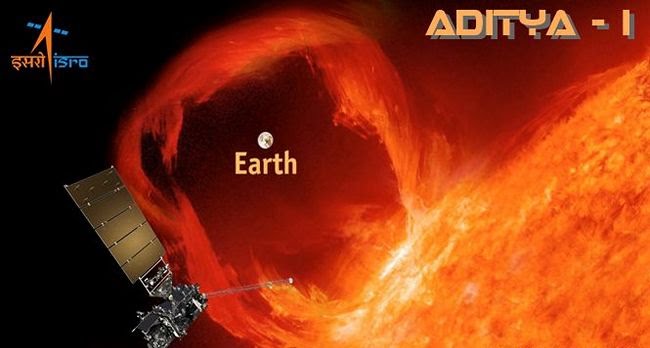
Aditya (2019-20)
ISRO plans to carry out a mission to the Sun by the year 2019-20 – the probe is named as Aditya-1. It is the First Indian based Solar Coronagraph to study solar Corona in visible and near IR bands. Launch of the Aditya mission was planned during the high solar activity period in 2012 but was postponed due to the extensive work involved in the fabrication and other technical aspects. The Aditya-1 mission was conceived as a 400kg class satellite carrying one payload, the Visible Emission Line Coronagraph (VELC) and was planned to launch in a 800 km low earth orbit. A Satellite placed in the halo orbit around the Lagrangian point 1 (L1) of the Sun-Earth system has the major advantage of continuously viewing the Sun without any occultation/eclipses. Therefore, the Aditya-1 mission has now been revised to “Aditya-L1 mission” and will be inserted in a halo orbit around the L1, which is 1.5 million km from the Earth. The satellite carries additional six payloads with enhanced science scope and objectives.
The main objective is to study the Coronal Mass Ejection (CME) and consequently the crucial physical parameters for space weather such as the coronal magnetic field structures, evolution of the coronal magnetic field etc. This will provide completely new information on the velocity fields and their variability in the inner corona having an important bearing on the unsolved problem of heating of the corona would be obtained.
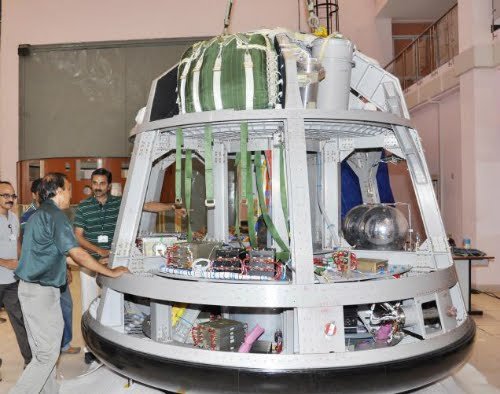
Manned Space Flight Programme (2021)
The Indian human Spaceflight programme is a proposal by ISRO to develop and launch a two-person crew to low Earth orbit. Reports indicate that their human spaceflight will occur after 2017, on a GSLV-Mk III, as the mission is not included in the government’s 12th five-year plan (2012–2017). India’s First Manned Space Mission is being planned in 2021 by the ISRO.
With Russia, USA and China being the only countries to have successfully conducted human space flight programmes, the scientists were hoping to make India the fourth. India’s space programme has seen great leaps lately, with the devising of the cheapest successful Mars mission Mangalyaan, the navigation satellite system IRNSS, record 104 satellites launch and the subsequent entry into the global space business. A manned mission could be the next big leap.
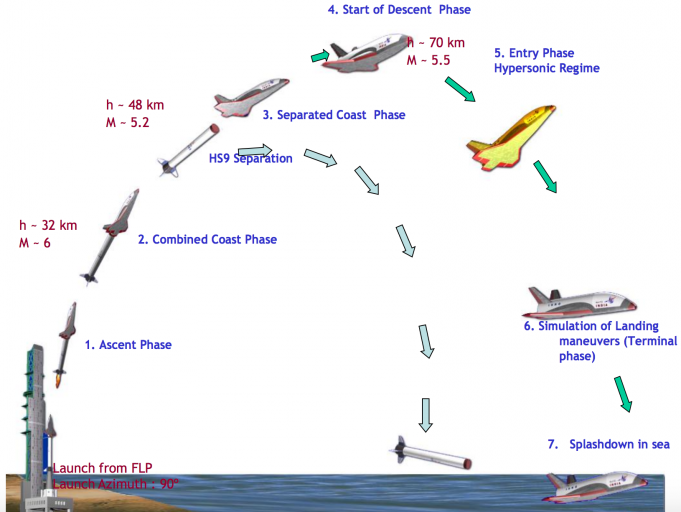
The Reusable Launch Vehicle (RLV)
Taking baby steps towards developing a reusable launch vehicle capable of sending spacecraft into orbit and returning to the earth’s surface, ISRO has already successfully tested the country’s first winged-body aerospace vehicle. The technology, when developed completely, would launch spacecraft, including satellites, into space and re-enter the earth’s atmosphere withstanding extreme pressure and heat conditions and land in an intended spot, helping to cut costs on launch vehicles substantially.
In the experimental mission, the HS9 solid rocket booster carrying RLV-TD lifted off from the First Launch Pad at Satish Dhawan Space Centre, Sriharikota on 23 May, 2016. From that peak altitude of 65 km, RLV-TD began its descent followed by atmospheric re-entry at around Mach 5 (five times the speed of sound). After successfully surviving high temperatures of re-entry with the help of its Thermal Protection System (TPS), RLV-TD successfully glided down to the defined landing spot over Bay of Bengal, thereby fulfilling its mission objectives. The vehicle was successfully tracked during its flight from ground stations at Sriharikota and a shipborne terminal. Total flight duration from launch to landing of this mission of the delta winged RLV-TD, lasted for about 770 seconds. In this flight, critical technologies such as autonomous navigation, guidance & control, reusable thermal protection system and re-entry mission management were successfully validated.